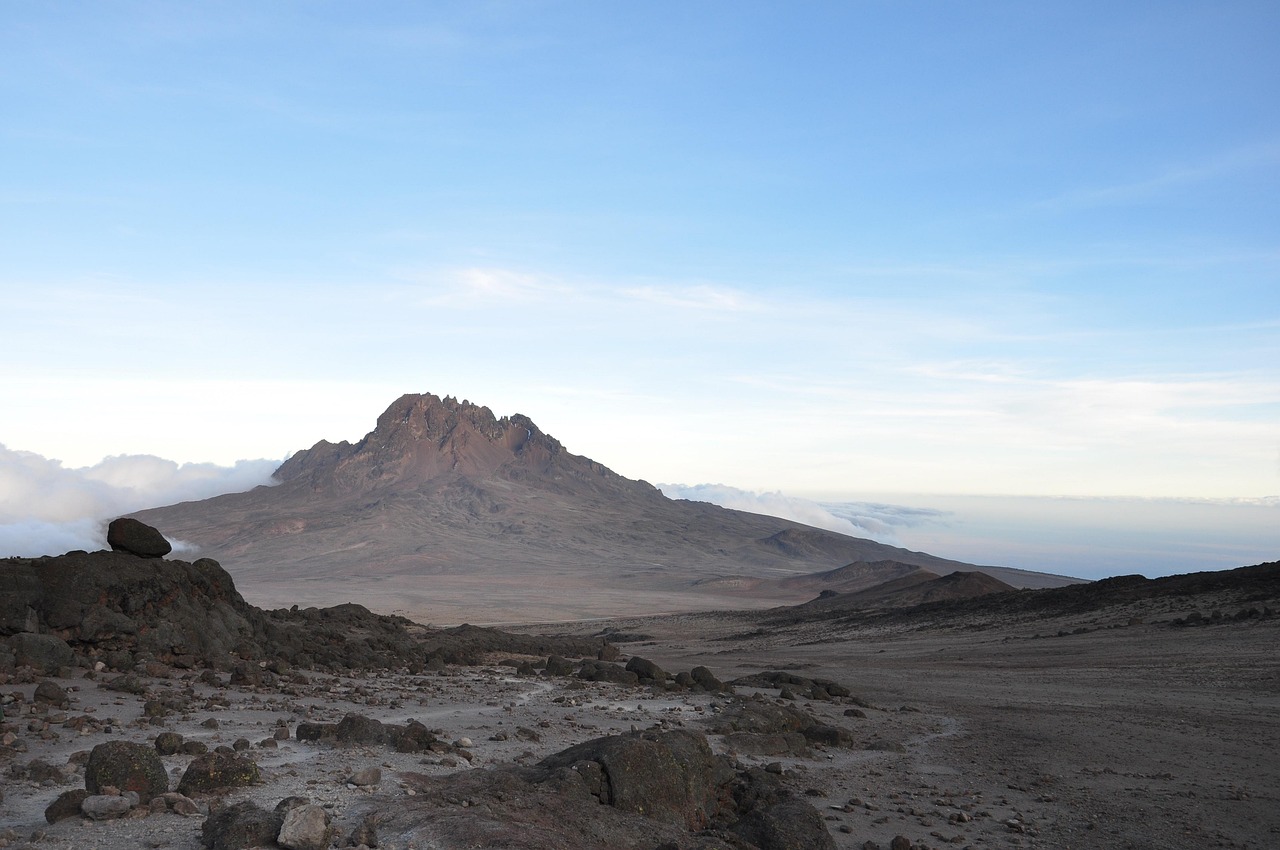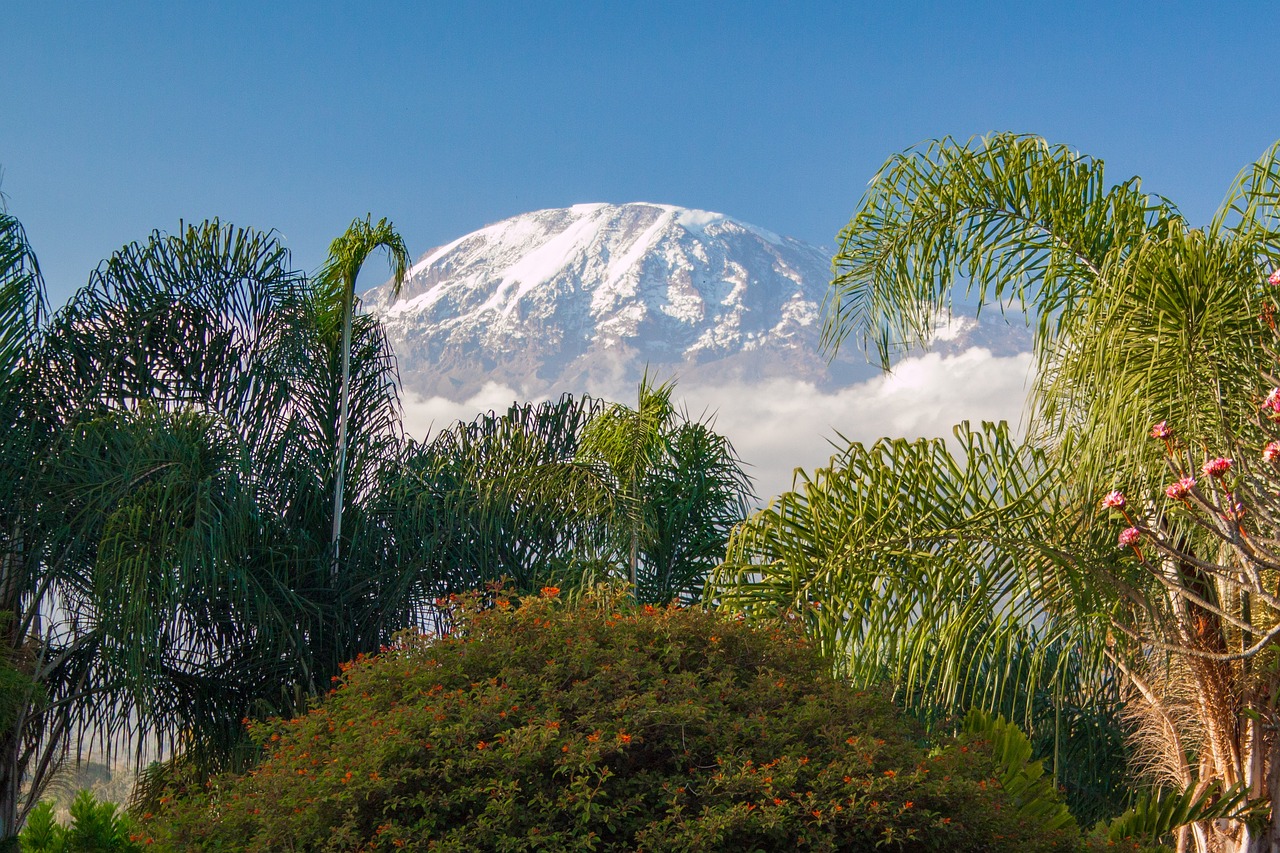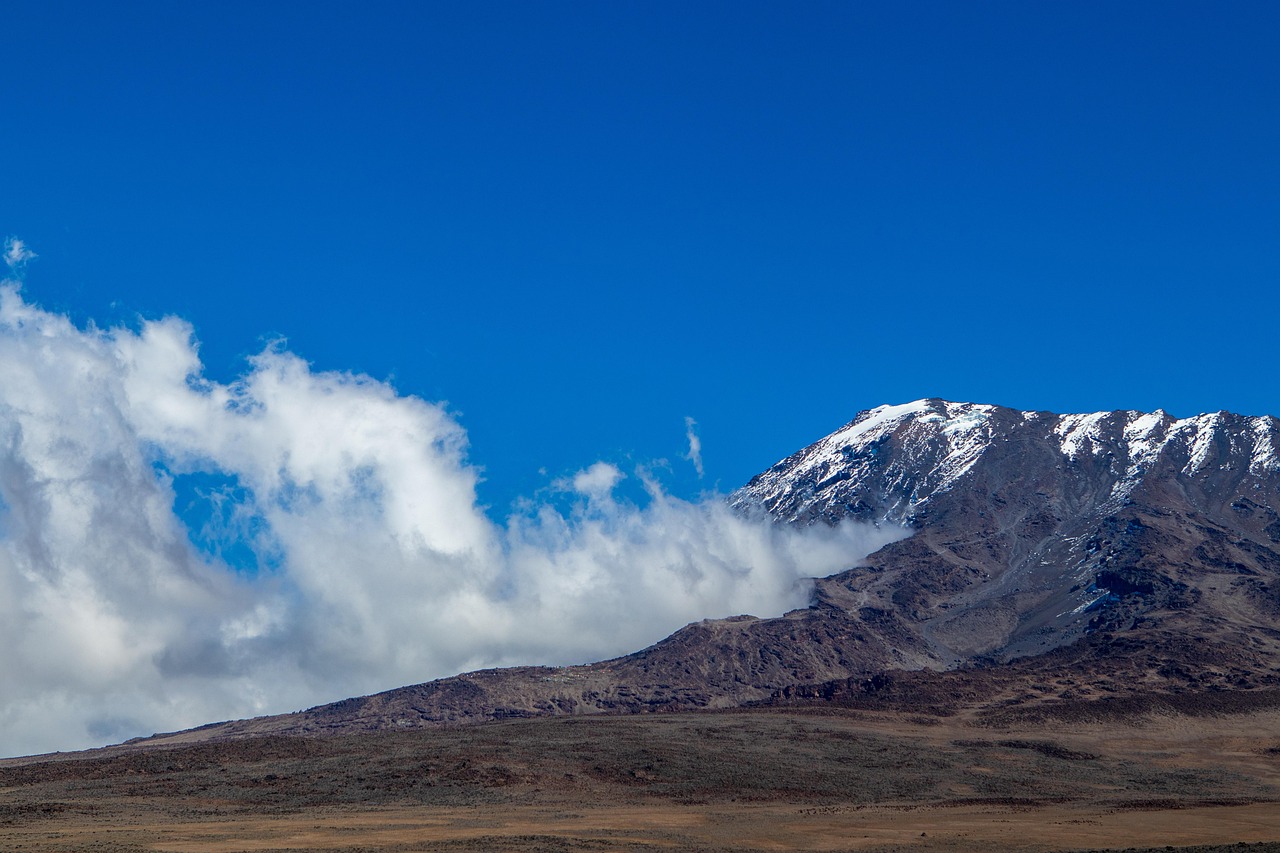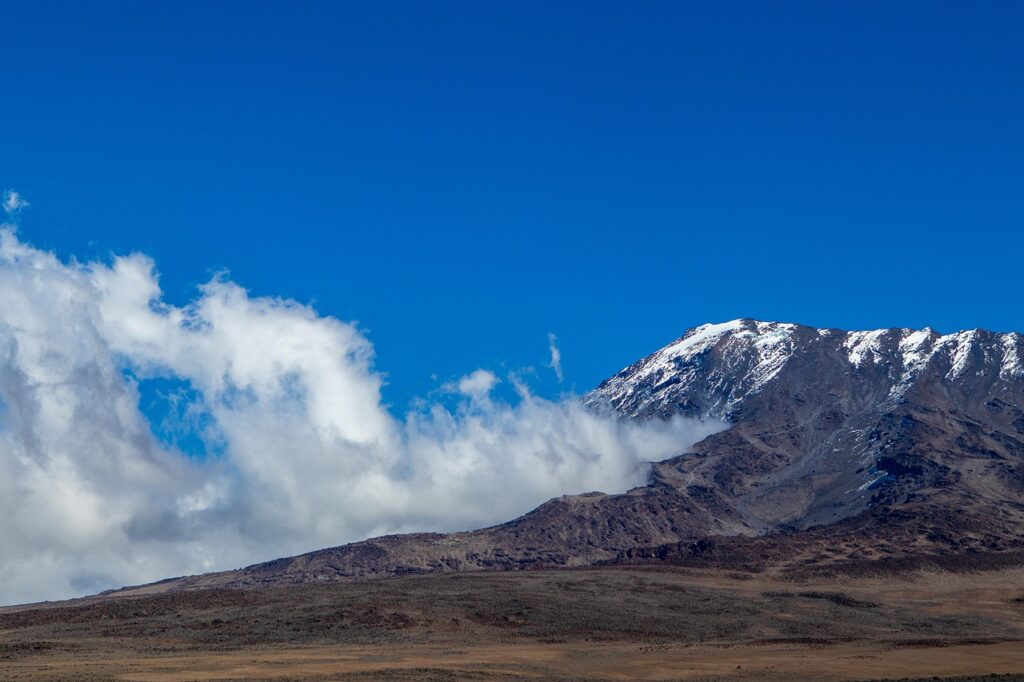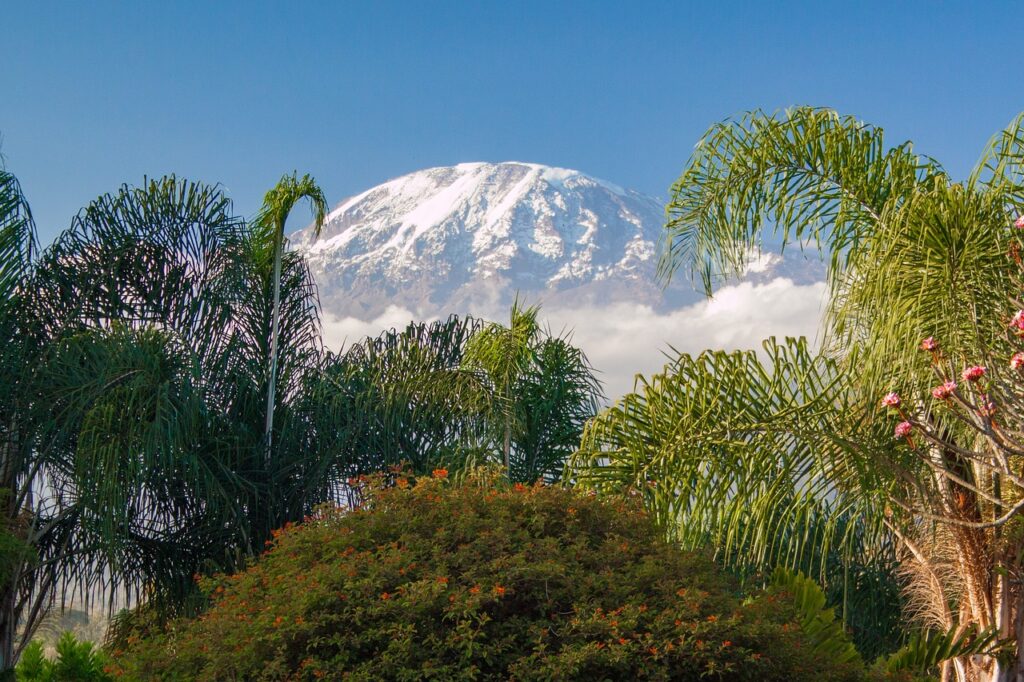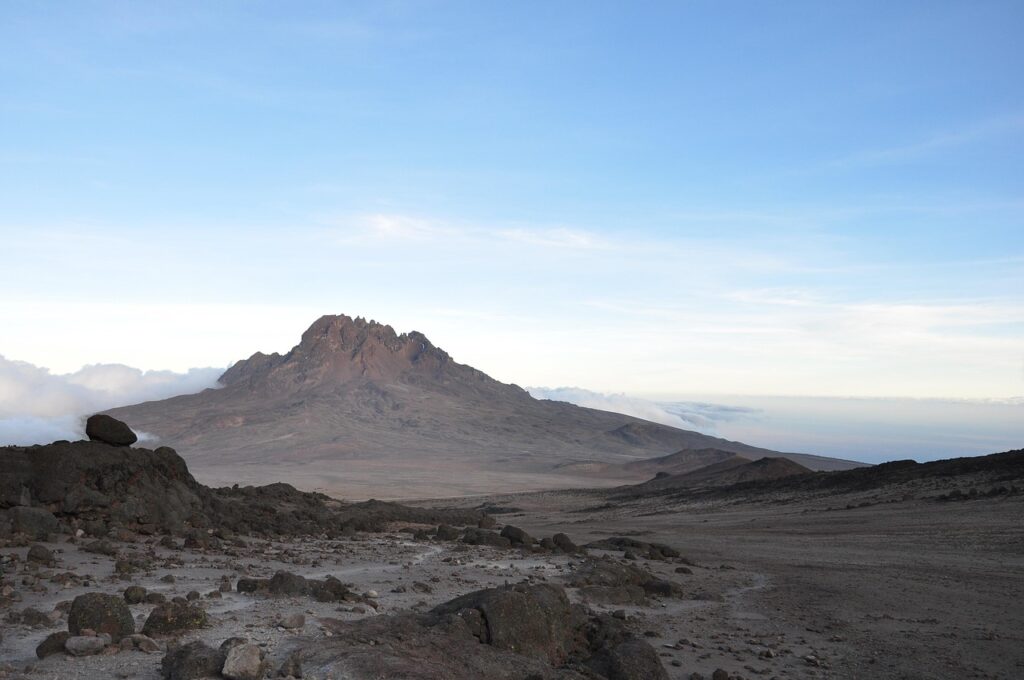Mount Kilimanjaro: The Roof of Africa
Standing tall at 5,895 meters (19,341 feet), Mount Kilimanjaro is not just Africa’s highest peak—it’s a global icon and one of the world’s most accessible high-altitude summits. Located in Tanzania, this majestic, snow-capped mountain is a dormant volcano composed of three distinct volcanic cones: Kibo, Mawenzi, and Shira. Unlike other great mountains, no technical climbing skills are required to reach its summit, making it an achievable dream for any physically fit adventurer.
Conquer the World's Highest Free-Standing Mountain
A Kilimanjaro climb is more than just a hike; it’s a journey through a series of dramatic ecosystems, a mental and physical challenge, and a truly life-changing experience. Trekkers are rewarded with stunning vistas of the African plains, a profound sense of accomplishment, and an unforgettable immersion in a unique natural world.
The Ecological Zones of Kilimanjaro
As you ascend Kilimanjaro, you’ll pass through five distinct ecological zones, each with its own unique climate and vegetation. This dramatic change in scenery is a highlight of the climb:
- Cultivation Zone (800m – 1,800m): The fertile lower slopes and farmlands at the mountain’s base.
Rainforest Zone (1,800m – 2,800m): A lush, dense forest with high humidity and abundant wildlife, including monkeys and unique bird species.
Moorland Zone (2,800m – 4,000m): Characterized by open landscapes, with giant heathers, bizarre-looking groundsels, and lobelias dotting the terrain.
Alpine Desert Zone (4,000m – 5,000m): A harsh, arid environment with extreme temperature fluctuations and sparse vegetation.
Arctic Summit Zone (5,000m+): The final approach to the summit, covered in snow, ice, and glaciers with below-freezing temperatures.
Popular Climbing Routes
Marangu Route (The “Coca-Cola” Route)
Duration: 5-6 days Accommodation: Huts. Difficulty: Moderate
Highlights: This is the oldest and most traditional route, often considered the easiest due to its gradual slope. It’s the only route with hut accommodations, making it a popular choice for those who prefer not to camp. However, its shorter duration can make acclimatization more challenging.
Machame Route (The “Whiskey” Route)
Duration: 6-7 days
Accommodation: Camping
Difficulty: Challenging
Highlights: Known for its stunning scenic beauty and excellent acclimatization profile. It’s a more challenging climb with steeper sections, but the “climb high, sleep low” approach significantly improves success rates. It’s one of the most popular routes.
Lemosho Route
Duration: 7-9 days
Accommodation: Camping
Difficulty: Challenging
Highlights: A longer and more remote route, offering breathtaking panoramic views from the start. Its longer duration provides superb acclimatization, leading to a very high success rate. It’s an excellent choice for those seeking a less crowded, more scenic experience.
Rongai Route
Duration: 6-7 days
Accommodation: Camping
Difficulty: Moderate
Highlights: The only route that approaches the mountain from the north, near the Kenyan border. It’s a relatively gentle climb with a drier climate, making it a great option during the rainy season. It’s less crowded than the Machame and Marangu routes.
Northern Circuit
Duration: 9-10 days
Accommodation: Camping
Difficulty: Challenging
Highlights: The longest and newest route, traversing nearly the entire northern side of the mountain. It offers the best acclimatization profile and the highest summit success rates. This route provides a remote, wilderness feel and is perfect for experienced hikers.
MOUNT KILIMANJARO COST PER PERSON IN USD
| ROUTE NAME | DAYS ON THE MOUNTAIN | PRICE PER PERSON |
|---|---|---|
| MACHAME ROUTE | 6 DAYS | USD 1800 |
| MACHAME ROUTE | 7 DAYS | USD 2000 |
| LEMOSHO ROUTE | 7 DAYS | USD 2200 |
| LEMOSHO ROUTE | 8 DAYS | USD 2500 |
| RONGAI ROUTE | 6 DAYS | USD 1850 |
| MARANGU ROUTE | 6 DAYS | USD 1700 |
| MARANGU ROUTE | 5 DAYS | USD 1500 |
| UMBWE ROUTE | 6 DAYS | USD 1800 |

